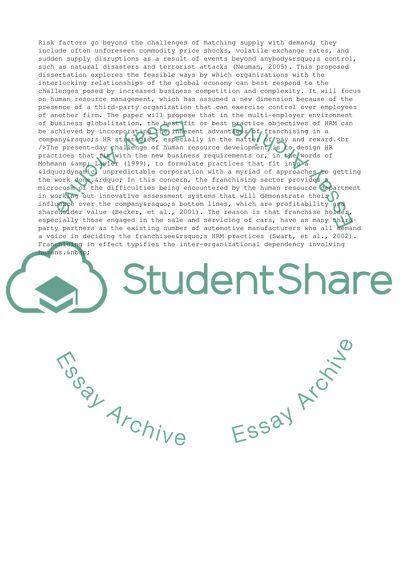Cite this document
(Getting the Best Fit between Business and HR Strategies in the Complex Research Proposal, n.d.)
Getting the Best Fit between Business and HR Strategies in the Complex Research Proposal. https://studentshare.org/business/1710339-evaluate-the-cause-and-effect-of-human-resource-strategies-particularly-pay-and-reward-within-inter-organisational-relationships
Getting the Best Fit between Business and HR Strategies in the Complex Research Proposal. https://studentshare.org/business/1710339-evaluate-the-cause-and-effect-of-human-resource-strategies-particularly-pay-and-reward-within-inter-organisational-relationships
(Getting the Best Fit Between Business and HR Strategies in the Complex Research Proposal)
Getting the Best Fit Between Business and HR Strategies in the Complex Research Proposal. https://studentshare.org/business/1710339-evaluate-the-cause-and-effect-of-human-resource-strategies-particularly-pay-and-reward-within-inter-organisational-relationships.
Getting the Best Fit Between Business and HR Strategies in the Complex Research Proposal. https://studentshare.org/business/1710339-evaluate-the-cause-and-effect-of-human-resource-strategies-particularly-pay-and-reward-within-inter-organisational-relationships.
“Getting the Best Fit Between Business and HR Strategies in the Complex Research Proposal”. https://studentshare.org/business/1710339-evaluate-the-cause-and-effect-of-human-resource-strategies-particularly-pay-and-reward-within-inter-organisational-relationships.


